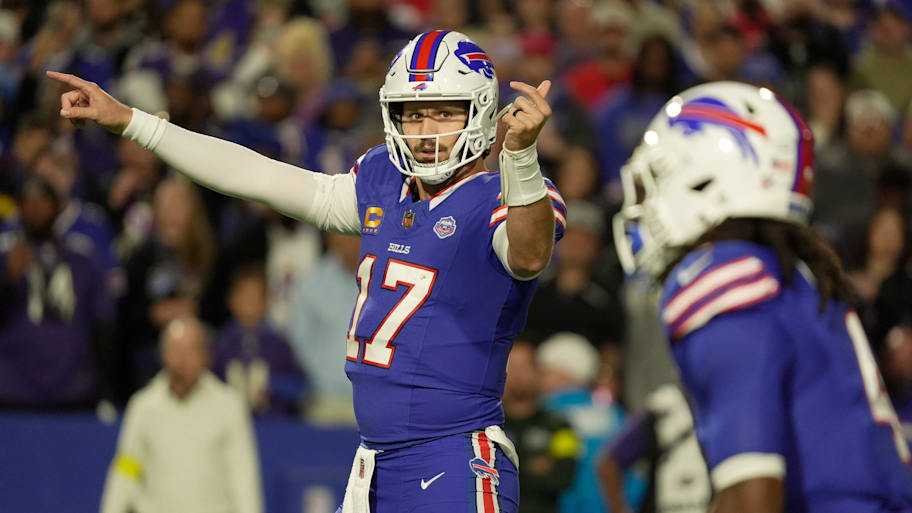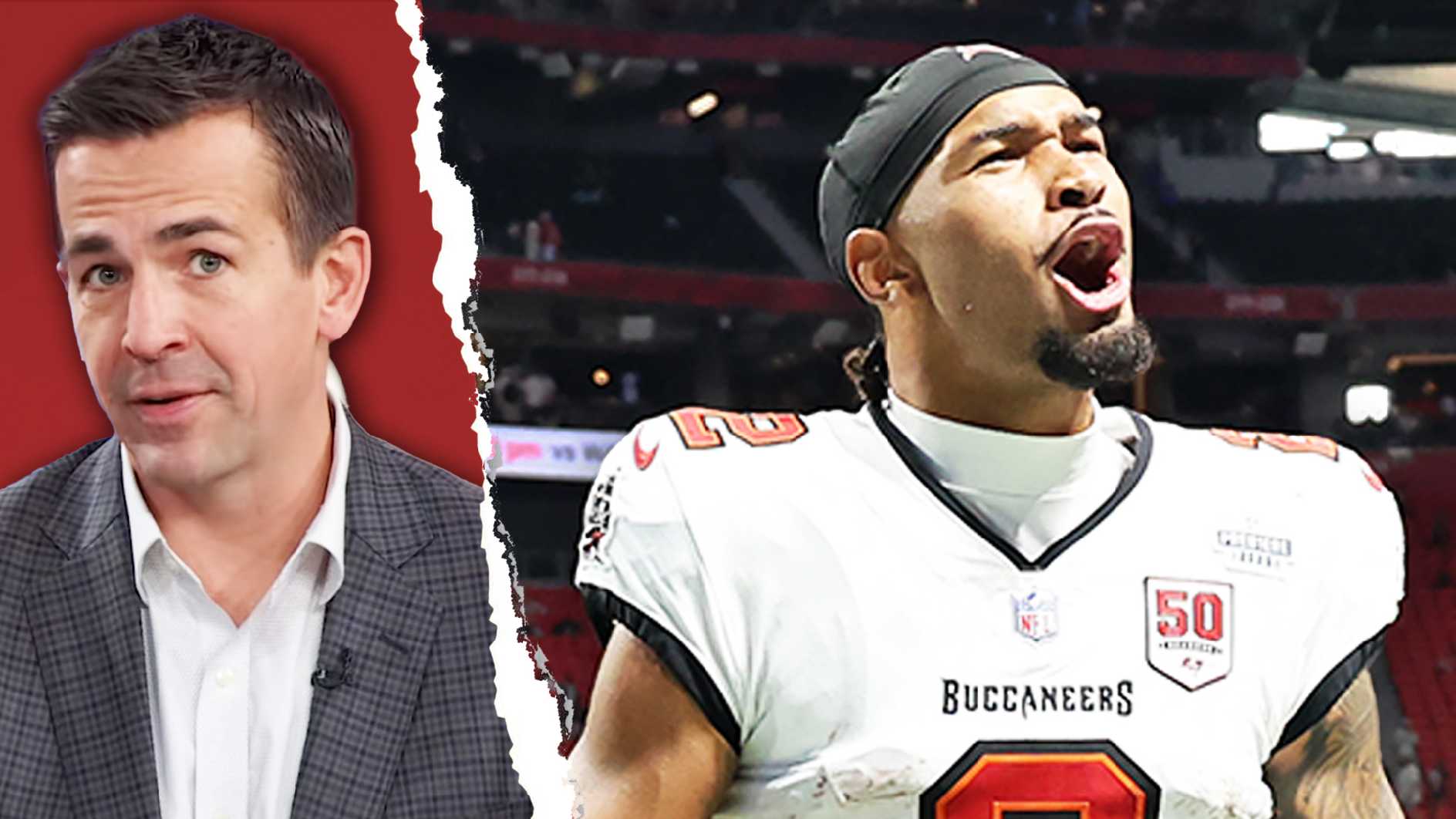
The first Sunday of the 2025 season is in the books. We have a lot to cover in the MMQB takeaways, so let’s get to it …
Buffalo Bills
Josh Allen’s level of play is ridiculous right now. I know that’s easy to say after what happened Sunday night—one of the wildest comebacks you’ll ever see in any sport. The Bills were down 40–25 going into the game’s final five minutes. From that point forward, the reigning MVP led Buffalo on two touchdown drives, then to a game-winning field goal.
The 41–40 win over a Ravens team that looked like a legitimate juggernaut through 55 minutes wasn’t just about Allen, to be sure. Second-year receiver Keon Coleman’s concentration to catch a ball deflected off Dawson Knox’s outstretched hand on fourth-and-2 for the comeback’s first touchdown was off the charts. Ed Oliver made an incredible play to jar the ball loose from Derrick Henry with 3:06 left, and that kicked the comeback into high gear. Then, there was rookie Jackson Hawes’s big juggling catch on the next TD drive.
But if we’re being honest, this night was about Lamar Jackson and Derrick Henry throwing haymaker after haymaker—and then Allen responding like the Ravens were his speed bag.
And it brought me back to a talk I had with Allen in July, involving an old Bruce Lee clip.
“The master is talking about, What technique are you thinking about?” Allen said. “And he’s like I’m not thinking about a technique. So it’s getting to that point where it’s not a technique, it’s something that just … it’s autonomously happening. … Eventually, at some point, it will become muscle memory and I won’t even have to worry about it.”
That, to me, sums up what I saw from Allen at practice when I was at their camp.
It used to be that you’d show up to Rochester for the Bills camp, and see Allen show off his breakneck style by making impossible plays everywhere. It’s not like that anymore.
At least what I saw this summer was a version of Allen that was under control, and who was seeing the game in slow motion compared to how he used to. Everything looked easy for him. I’d said on a few shows the past few weeks that Allen being in that place should scare other teams—because that’s where he’d become really impossible to defend.
And I think that’s what everyone saw Sunday night.
The throws to Coleman and Hawes were calmly delivered from the pocket, and others from outside the pocket’s constraints came completely under control. If it looked at times like he was toying with a very, very good defense, maybe he actually was.
At any rate, what we just witnessed was pretty amazing.
And I won’t argue against the idea of getting to see those two lock horns again in a little more than four months or so.
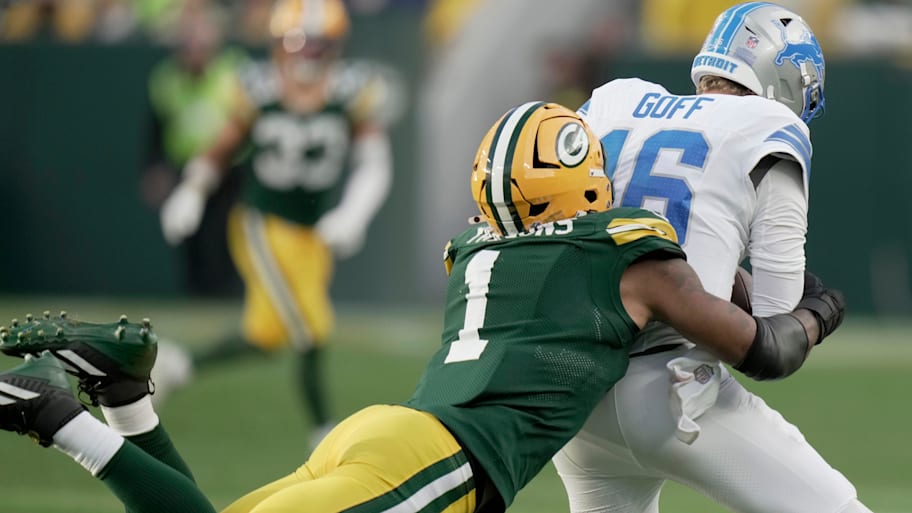
Green Bay Packers
The Packers really have something on defense. I say that because, talking to that group’s coordinator, Jeff Hafley, after the game … it felt like he could jump right through the phone.
“I’m excited because that team last year was one of the best teams in the NFL,” Hafley said, referencing the Lions. “One of the most explosive offenses in the NFL—with receivers, running backs, tight ends and a quarterback. They played hard. I’m proud of how hard we played today. We were physical and flying around and hitting. The guys had fun and we stopped them on fourth down. … Like, it was just fun to watch.”
Yes, some of Hafley’s excitement can be chalked up to Micah Parsons being a Packer.
But Sunday’s dominant 27–13 win over Detroit, for this particular Green Bay assistant, was about a lot more than just that. Hafley kept coming back to the Lions’ 46 rushing yards, accumulated on 22 carries, for an average that barely got over two yards, which created the passing situations to plug Parsons into the game for. He raised the play style—“so physical, so violent”—that his unit brought to the table repeatedly.
That said, if you want to talk about the bigger picture, in what this all means, and where it could take the defense, and the Packers in general? That’s where Parsons really comes in.
And as for what’s getting Hafley amped up about that—there’s Parsons’s track record, there are a few highlights from Sunday and then there are all the things he got to see over the first week he had the former Cowboys superstar.
While the Dallas–Green Bay blockbuster happened two Thursday ago, it wasn’t until Aug. 31 that Parsons was moved up north and ready to work with the Packers’ coaches, giving everyone involved exactly a week to lay out and execute a Week 1 plan. That plan, to start, was for defensive line coach DeMarcus Covington to teach Parsons the fronts, and Hafley and Covington to give him enough calls to play some in the team’s nickel defense Sunday.
“We just kept meeting with him,” Hafley said. “A lot of it was getting to know him, developing a relationship with him. I quickly learned his football IQ is incredible. His retention, his football IQ, I was like, Wow. And that made it a lot easier.”
As such, Parsons and the staff kept working to accelerate his learning process. On Tuesday, the players’ day off, Parsons came in for meetings with the defensive coaches. After the players went home the rest of the week, he stuck around to meet with them again.
By the end of the week, Hafley estimated, Parsons had between 50% and 70% of the Packers’ nickel defense committed to memory, which is a lot to take in for any player.
“It goes back to his football IQ and retention,” Hafley said. “To put himself in position to play today was incredible.”
He delivered when he was out there, too—he had a sack despite only playing 29 snaps.
And, of course, there’s now the hope that he’ll do a lot more, with more time in the system.
The good news is that, to this point, he’s done all he can to contribute as quickly as he can to a team that’s felt, the past couple of years, like it may actually only be a player or two away. That’s all the aforementioned football work, of course, and also stuff that belies some of the noise out of Dallas on him—he’s quickly become a presence in shooting hoops with the D-line in the Packers’ indoor facility, and at least signaled carrying a team approach to his role.
“Look, I know it’s only been a week, but he’s been incredible,” Hafley said. “For example, most elite pass rushers don’t want to drop into zone coverage. In practice, I called a simulated pressure and he dropped and let R.G. [Rashan Gary] rush. He told me he was willing to do those things—and that’s so cool. He gets it. He knows everyone is going to base their protection on him. He’s willing to drop on a play and set it up for others.
“Most D-linemen won’t do that.”
Which is to say, the Packers see the possibilities as being endless here.
Sunday was a good start. Hafley said he’d see how Parsons feels Monday, then come up with a plan for Thursday’s home game against the Commanders.
One thing’s for sure—the Packers only see things getting better from here.
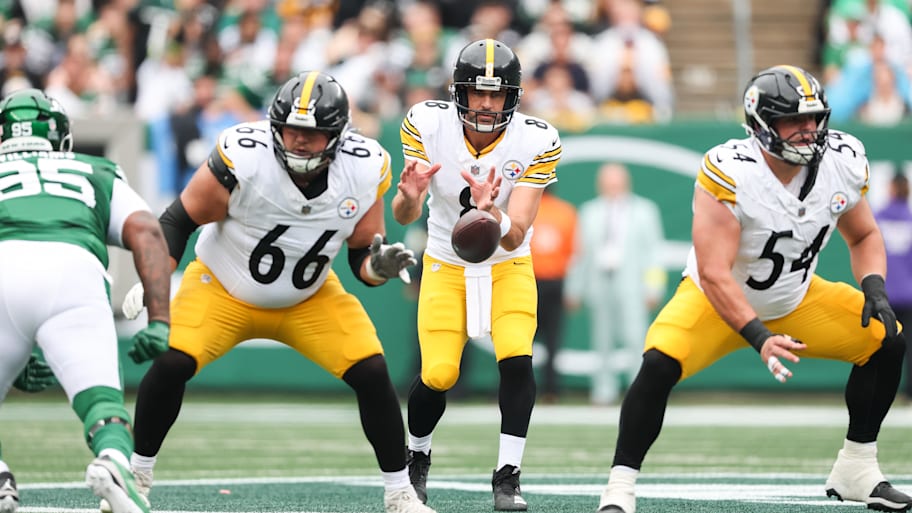
Pittsburgh Steelers
The Steelers have a right to be excited about Aaron Rodgers, but also what’s around him. The Steelers’ season-opening win against the Jets was far from a work of art. They were outrushed 182 to 53, with the Jets nearly doubling their average per carry (4.7 to 2.7), and outgained in total 394 to 271. Their old friend Justin Fields was coldly efficient, throwing for 218 yards and a touchdown, with a 119.1 passer rating.
Yet, Pittsburgh won 34–32, and came out of it with the arrow pointing up. As to why and how, you can start with Rodgers, who had all kinds of motivation to show up in this one, and did.
Maybe the most satisfying part for the quarterback and his coaches was how it happened. Rodgers heard the critics that look at him now as a stationary quarterback. Sunday showed, on three of his four touchdown passes, that his arm isn’t the only thing that has juice left.
Those three all came on movement plays from under center, calls requiring a quarterback who can create space with his legs. On the first one, Rodgers faked a handoff to Jaylen Warren to his left, rolled right and bought time for Ben Skowronek to get across, with the former Ram collecting the ball over the middle and doing the rest. On the second, he faked to Warren, who leaked into the right flat, where Rodgers dumped the ball to him. On the third, he ran a straight play fake, then threw a corner route to Calvin Austin III for a score.
On that last one, Rodgers took a few extra steps back to evade pressure, before flicking his wrist to get it to Austin as the receiver approached the goal line.
Again, all of it showed that Rodgers, who’s not 25 anymore, can still move around a bit.
Then, there was what his fellow newcomers brought to the table. DK Metcalf had a spectacular catch, made from his back after he’d hit the ground, to put Steelers kicker Chris Boswell in position to hit a 60-yard field goal to put the Steelers up with 1:03 left. Four plays after that kick, Jalen Ramsey came in like a rocket to jar the ball loose from Garrett Wilson on fourth-and-3 with 18 seconds remaining, to effectively end the game.
Put all this together and, again, there’s a lot for the Steelers to work on, but also a lot to build on. The run game will be better. The defense, too. And the sense of urgency among a group of players who may only get one real shot at this together seems pretty clear, as well.
Los Angeles Chargers
The Chargers’ Friday night win over the Chiefs is worth your attention. And it’s because, yes, it looks like Jim Harbaugh might be doing what he did with the University of San Diego, Stanford, the 49ers and Michigan. But coming out of the team’s massive 27–21 win over the nine-time defending AFC West champions, more specifically, this is about the guy Harbaugh’s been so openly smitten with since the minute he landed in Los Angeles 20 months ago.
Justin Herbert was damn near flawless in Brazil.
“It’s MVP level,” Chargers OC Greg Roman said over the phone Saturday afternoon, after getting home to the States. “It really is. That’s a big-time game and he played about as good as you can. … Patrick Mahomes goes down the field and answers, and Justin Herbert comes out, right back at ya, and oh by the way you’re not getting the ball back at the end.”
The ending that Roman’s referencing—a 19-yard scramble on which Herbert looked like an SUV breaking the speed limit turning the corner, punctuated by a slide that would make a leadoff hitter proud, to convert third-and-14—perfectly illustrates where the QB is in his career.
And it brings Roman back to an offseason trip he made to Herbert’s home in Oregon.
Roman didn’t just go to Eugene to bond with his quarterback, though that was part of the idea. He was also there with an intent to help Herbert take his next steps as a player. To that end, he came equipped with tape to fully bring the idea to life.
That it didn’t happen last year was, to a degree, unavoidable. Plantar fasciitis cost Herbert almost all of training camp, and that foot injury was followed later in the year by an ankle injury that prompted the coaches to act with some caution in his deployment. Free of that, Roman implicitly gave Herbert the green light to run more as they went through film.
“Last year, when he got his feet involved, great things happened,” Roman said. “We scored a lot of points and won those games—Denver, Cincinnati. And showing a lot of cutups of it, and just talking through it: Oh, look at what Josh Allen just did, look at what Mahomes just did. It’s making him aware. It’s not a mandate. It’s as we continue to just be the winningest group we can be on offense, that’s something that we just need to get more out of him.”
Friday showed that Herbert as a runner can affect a defense, even on a play that doesn’t count.
This one came on the final play of the first quarter. On first-and-20, Herbert made Drue Tranquill miss in the open field, ran Jaylen Watson over, then lowered his shoulder and fought through Nick Bolton at the sticks to cap a 22-yard gain. It came back on a holding call, but a message was sent.
“It demoralizes the defense,” Roman said. “They had great coverage, then all of a sudden, Oh man, another first down. And it was so cool to beat the Chiefs with that, too. Mahomes does that to everybody. It’s a vital asset.”
Add to that Herbert as a passer—his rating was 131.7 against a really good Kansas City group—and it’s easy to see why Harbaugh, Roman and everyone else in powder blue is really excited about their quarterback. Last year, Roman said, because of the injury, they basically had to treat September as a second training camp for the offense.
This year, they are hitting the ground running. Roman said, after looking at the tape, Herbert had just one miss, the slight overthrow to Ladd McConkey deep in Chiefs territory. “I told Ladd to get longer arms,” Roman said.
It was a joke. However, he was serious in saying Herbert was actually that close to throwing a perfect game.
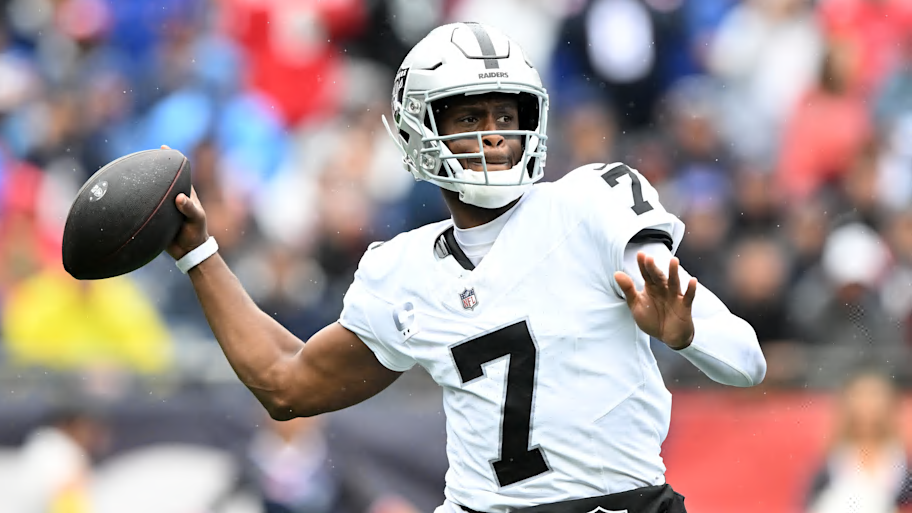
Las Vegas Raiders
The Raiders are worth watching. And it’s not because I suddenly think they’re a playoff team. That would be a lot to ask for in Year 1 of the new program, based on what new coach Pete Carroll and GM John Spytek inherited. It isn’t singularly about Sunday, either.
It’s more so about credibility.
To me, that’s what the Raiders’ past 12 months have been about, stretching back to Tom Brady buying into the team and helping to bring deep-pocketed partners aboard. Since then, Vegas has landed Pete Carroll, spent $6 million per year to lure new OC Chip Kelly from Ohio State and traded for veteran quarterback Geno Smith.
What Sunday’s 20–13 win over the Patriots—who brought in their own proven commodity of a head coach in Mike Vrabel—does is bring validation to that credibility play.
Don’t believe it? Listen to what Smith himself told me about the win, soon after it ended.
“It’s just one win,” Smith said, making his way to the exits in Foxborough. “It’s hard to win in the NFL—takes a lot of hard work. The thing I saw with the game flow, midway through the second quarter, we hit a rut, but no one was down on themselves. We regrouped and executed after the half. I always look at the things we can improve on and get better at. But we all stuck together. No one was upset. That’s the markings of a Pete Carroll team.”
And that certainly could’ve happened, after the Raiders missed a field goal at the end of the first half, then the Patriots quickly moved the ball from their own 12 to midfield at the start of the third quarter, looking to extend their 10–7 lead.
Instead, Raiders safety Isaiah Pola-Mao picked off a Drake Maye overthrow to stop that drive, the defense didn’t allow another first down until the final play of the third quarter, and the offense put together 71- and 52-yard scoring drives to go into the fourth quarter up 17–10. By the time the Patriots crossed midfield into Raiders territory for the first time in the second half, Vegas had a 20–10 lead and there was less than a minute left in the game.
Along the way, the Kelly effect was felt, too—in particular on a third-and-20 conversion that was more-or-less the end for New England. It happened with 3:23 left, and it was set up by the Raiders throwing inside at Patriots corner Carlton Davis III.
“We were running some in-cuts on third-and-long—Carlton had jumped in and broke one up, I tried to put it in there in coverage, and Carlton did a great job driving the route,” Smith said. “That’s something he’s been doing his whole career. Just studying through the week, it was something we brought up in the scout meetings. We thought we could take advantage of [jersey number] seven, so it was the right time and it worked out.”
In a simpler sense, as Smith described it, the Raiders were fighting expected aggression from the Patriots defense on third-and-long with their own aggression. The result was Dont’e Thornton Jr. getting so open on a double move that even Smith underthrowing the ball a bit, with pressure in his face, didn’t stop Vegas from easily converting.
So you can see some of these things coming together for Carroll’s crew.
And a real chance for the guys now in house, in tandem with Brady, Spytek and Carroll, to reimagine an iconic brand. Again, it probably won’t happen overnight. But there are some pretty good signs on where this is going.
“It’s a great opportunity, but we can’t bypass the work,” Smith said. “It is cool thinking about what we can be, but if we don’t take the right approach, it will just be a dream. We have to make it a reality. “
And if you don’t buy that as the team’s focus, you can take it from Brady himself.
His text to Smith postgame: Good game. Get ready for the next one.
Indianapolis Colts
For now, at least, Daniel Jones proved Shane Steichen and the Colts’ staff right. All those guys talked about over the summer, on the quarterback competition, was finding someone who’d be able to operate Steichen’s offense. It sounded simple, of course (as in, Haven’t a lot of people been able to do that?!?). But it’s about more than just a quarterback’s ability to blurt out a play, make a series of throws or carry out a run fake.
It’s about the other 10 guys in the huddle, too. On Sunday, that really showed.
The Colts won 33–8 over a very flat Dolphins team, in a game that wasn’t that close. It will be remembered for this stat, that the Colts became the first team since 1977 to score on every possession. And if Jones has a renaissance this year, we’ll be pointing back to the way he played Sunday as the start of it. And it’s a start Steichen can honestly say he saw coming, based on how he evaluated Jones ahead of the former first-rounder’s free agency.
“He did a great job of finding completions his whole career,” Steichen said over the phone, a half hour after the win. “Then, hearing around the league how smart he is and how he sees the game, that was a big part of bringing him in.”
And why most Colts folks quietly conceded over the past few weeks that Jones was the leader for the job through pretty much the entire summer.
So where did it show up Sunday? In a few spots …
- Jones changed a protection on first-and-10 from the Dolphins’ 32 on Indy’s first drive, which bought him time to get the ball down the field to Tyler Warren for 22 yards.
- He checked out of a play that would’ve been run into a bad look on fourth-and-2 from the Miami 42, with 2:42 left in the first half, setting up a six-yard completion to Josh Downs to move the chains.
- In the “finding completions” category, he found Warren on a checkdown on the Colts’ third play from scrimmage, to get eight yards and put Indy in third-and-2. And there was another one to start the final drive of the first half, where he found Jonathan Taylor on a checkdown, that got Indy in second-and-5 from its own 17, sparking a possession that covered nearly seven minutes.
“Little plays like that go under the radar,” Steichen said. “Everyone wants to see the big plays, but those small plays move the needle and get us down the field.”
And they’re exactly what he and his staff were looking for, after so many fits and starts the past couple of years, and the feeling that the talent on offense was way better than the production had been.
But there were big plays, too, and those were setup by Jones’s know-how as well. One came on the Colts’ first offensive play of the second half, after a suggestion in the locker room. The quarterback mentioned to Steichen that the Dolphins were squatting on routes, and thought hitting them with a “spray-go” concept—where receivers would run go routes out of condensed splits—would exploit that. So Steichen called it, and Jones ripped one down the right sideline into the resulting hole in the coverage, connecting with Alec Pierce for 36 yards.
All of it brings Steichen hope that this is just the beginning for a group that has a solid line, and can throw Taylor, Warren, Pierce, Downs and Michael Pittman Jr. at a defense.
Because going with Jones was as much about maximizing those guys as anything.
At least for one week, the quarterback got that accomplished. So, maybe, just maybe, this story will wind up sounding a little like Geno Smith’s or Sam Darnold’s have the past few years.
“He’s been through it, and, to be in a new environment with new guys, the biggest thing is that he did a great job connecting with the players,” Steichen said. “He’s been with the defensive backs and the defensive linemen, chopping it up with them. Guys bought into him and his work ethic. … They have his back, and a new environment will help.”
It sure looked like it did on Sunday.
Tampa Bay Buccaneers
Emeka Egbuka’s big debut should only accentuate what you should already know about the Buccaneers. And maybe because they play in Florida, or the NFC South, they don’t get enough attention for it—but Egbuka’s readiness is just another example of how impressively the Buccaneers have emerged from their post–Tom Brady era, especially when compared to what happened in New England after the Patriots lost the legendary quarterback.
Egbuka had four catches for 67 yards and two touchdowns in his first NFL game, the final one coming from 25 yards out and providing the difference in a 23–20 win over the Falcons. The win could prove important down the line in the division race. That no one in Tampa was surprised with how it happened says a lot about Egbuka, too, as well as the Bucs.
And that internal matter-of-factness on Egbuka’s quick transition to the NFL might’ve been best illustrated by the look Baker Mayfield gave the rookie as he broke the huddle for first-and-10 from the Atlanta 25 with 1:04 left, and Tampa down 20–17.
“We weren’t going for a field goal—we are shooting to kill,” Egbuka told me, as he was leaving the stadium. “We’re playing for the touchdown. We ran that play a few times, but we didn’t have the right look, whether it was pressure or getting the ball out fast. So opposite hash on this one, Baker and I looked at each other in the huddle and …”
They knew what would happen next, in large part because Mayfield isn’t treating Egbuka like he’s a rookie. And that’s because he doesn’t play like one.
Meanwhile, just as Egbuka has helped fill the void left by rehabbing star receiver Chris Godwin, with homegrown All-Pro left tackle Tristan Wirfs out, the Bucs slid 2024 first-rounder Graham Barton, the team’s center last year, over two spots to protect Mayfield’s blindside.
There are examples of this all over Tampa’s roster. The Bucs dealt Carlton Davis III away two offseasons ago and had Zyon McCollum ready to roll. Luke Goedeke backfilled the right tackle spot when Wirfs flipped to left tackle after Donovan Smith left. Barton took over the spot Ryan Jensen held down for six years, and so on and so on.
The Bucs came out of the final cutdown as the only team with more than three-quarters of the final 53-man roster being homegrown, and that’s coming off four consecutive NFC South titles.
They also came out dealing with injuries such as Wirfs’s and Godwin’s. Yet, they’re still standing as the favorite to take home the South again.
Sunday made it pretty obvious again why it is that way.
Bill Belichick
I do think it’s worth getting in a word on Bill Belichick and his handling of scouts at North Carolina. In case you missed it, Belichick has barred Patriots scouts from the Tar Heels’ facility. On Saturday night, after his first win as a college coach, he actually sounded kind of proud of it.
“It’s clear that I’m not welcome around their facility,” Belichick said, “so they’re not welcome at ours. Pretty simple.”
That Belichick would hold a grudge will surprise no one. That he’d publicly admit to it like that should. Or at least it surprises me.
Here’s the thing: The real damage done here is to Belichick’s own players and, ultimately, the program he’s trying to build. And it’s not just the Patriots that it’s touching.
The other 31 teams that show up looking to scout his players have only been given access to one UNC staffer—pro liaison Frantzy Jourdain, who spent 14 seasons working for Belichick in New England (2003 to ’16)—and are only allowed at parts of practice. That, in turn, has limited how much those teams can gather on the players they’re trying to evaluate as NFL prospects.
“Nobody is mad about UNC being a s---y visit,” one AFC scouting director texted me. “They don’t have players. They aren’t talented. The only people who are gonna suffer is the UNC seniors who may be late-round guys or undrafted [free agents]. When we don’t have ample background on guys, and they are late round/UDFA types, we just move on to another guy with similar skill that we know more about.”
That, over time, should have a cascading effect. Because the simple appearance of these actions, which are now very public, affecting players’ ability to make it to the NFL, gives rival coaches ammo to attack Belichick with on the recruiting trail. Which, of course, will in time be a detriment to his staff’s ability to bring top talent to Chapel Hill.
The funny thing is this all started with Patriots scout Bryson Speas being turned away by the Tar Heels staff. Speas figured it was because he played for UNC rival NC State—sometimes those sorts of things actually do happen on the recruiting trail.
Little did he know how much more there was to this story.
And, yes, this is a Belichick–Robert Kraft issue. That said, for a guy who always talked about doing what’s best for the football team, he sure didn’t mind letting it become a UNC issue, as well.
More NFL on Sports Illustrated
This article was originally published on www.si.com as Week 1 NFL Takeaways: Yes, Josh Allen Is Even Better Now.
